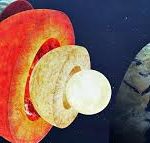Scientists discover the Earth’s inner core isn’t solid or liquid. It’s ‘superionic.’0
- Earth Mysteries, From Around the Web
- February 28, 2022
The structure of Earth’s core could be unlike any other state of matter, researchers have found.

The structure of Earth’s core could be unlike any other state of matter, researchers have found.

More than 5,000 kilometres beneath us, Earth’s solid metal inner core wasn’t discovered until 1936. Almost a century later, we’re still struggling to answer basic questions about when and how it first formed.

The team drilled a hole nearly 5 miles (8,000 m) below the Pacific Ocean’s surface to study the region’s earthquake history.

While most of us take the ground beneath our feet for granted, written within its complex layers, like pages of a book, is Earth’s history. Our history.

At some point in Earth’s 4.5-billion-year history, its entirely liquid iron core cooled enough to form a solid ball in the center.

A surprising new discovery has revealed a previously unknown structure located deep beneath the Pacific Ocean between the Earth’s core and mantle.

Data from old Soviet weapons tests are helping scientists get a high-resolution look inside our planet.

This shift both prevented the protective magnetic field from collapsing and recharged it

A new study by the University of Liverpool, in collaboration with the Universities of Lancaster and Oslo, sheds light on a longstanding question that has puzzled earth scientists.

The application of extreme pressure dramatically affects the chemical properties of xenon, so that it stops acting aloof and interacts with iron and nickel.